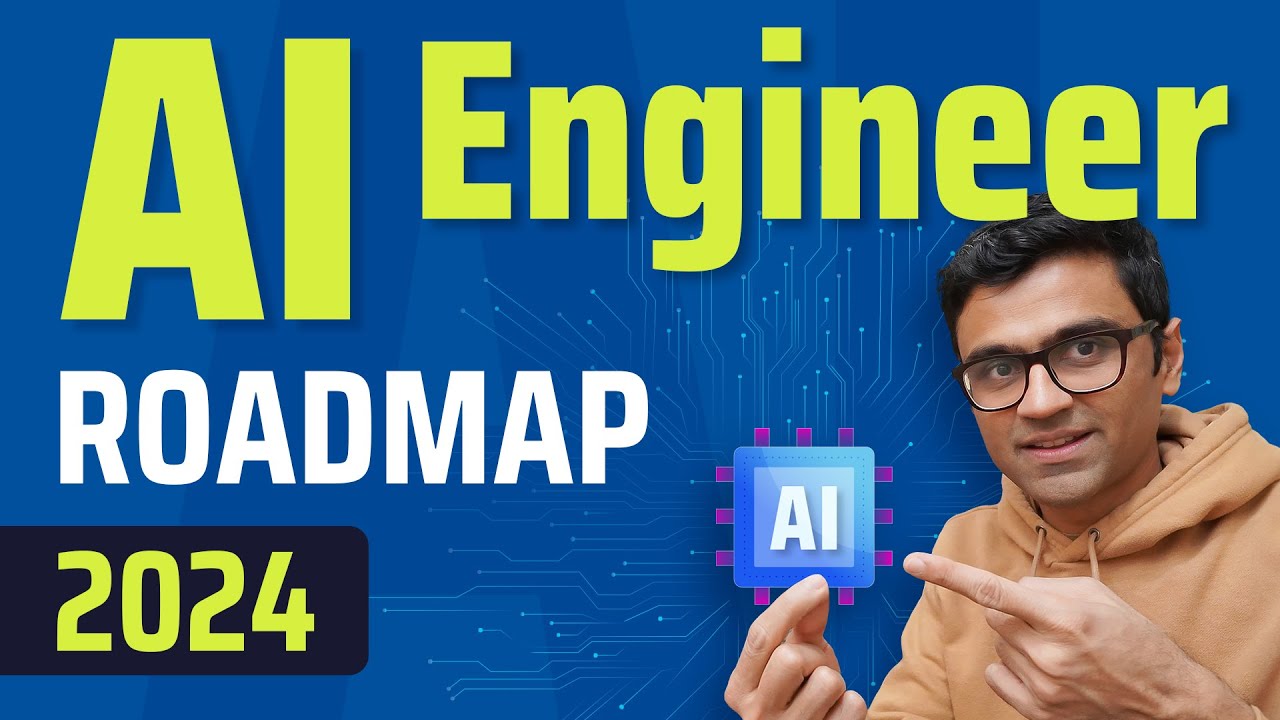How to Get Started with Computer Vision - Beginner to Advanced Roadmap
Summary
TLDRIn this video, the creator discusses how to get started with computer vision, combining deep learning and computer vision techniques. They emphasize the importance of foundational knowledge in computer science, programming (especially Python), and mathematics, particularly linear algebra and calculus. The video outlines a roadmap from basic image processing concepts to more advanced topics like feature extraction, 3D image processing, and deep learning integration. The creator encourages hands-on practice, community engagement, and continuous learning to stay updated in the rapidly evolving field of computer vision.
Takeaways
- 💻 Start with the fundamentals of computer science and programming, with Python being a recommended first language.
- 🧮 Gain a strong foundation in mathematics, especially linear algebra and calculus, as they are essential for understanding computer vision algorithms.
- 🖼️ Learn the basics of image and video processing, including techniques for filtering, transforming, and analyzing visual data.
- 🔍 Progress to intermediate levels by focusing on feature extraction, pattern recognition, and object detection within images.
- 🤖 Explore advanced computer vision topics like 3D image processing, depth estimation, and stereo vision.
- 🔬 Combine computer vision with deep learning to perform tasks such as object detection and segmentation.
- 🌐 Engage with online communities and forums to stay updated with the latest developments in the field.
- 📈 Participate in conferences and follow industry leaders on platforms like Twitter and LinkedIn to keep learning.
- 🛠️ Implement what you learn through practical projects to solidify your understanding and apply computer vision concepts to real-world scenarios.
- 📚 Follow tutorials that range from beginner to advanced levels to build a comprehensive skill set in computer vision.
- 🔄 Continuously learn and improve your skills, as computer vision is a rapidly evolving field.
Q & A
What are the first steps to get started with computer vision?
-To get started with computer vision, you should first learn the fundamentals of computer science and programming. Python is recommended for beginners. Once familiar with programming basics, you can explore C++ to understand lower-level concepts.
Why is math important in computer vision, and which areas of math are most relevant?
-Math is crucial in computer vision as it helps in understanding how algorithms and image processing work under the hood. The most relevant areas of math include linear algebra, for operations like matrix multiplication, and calculus, for optimization and transformations.
What are the basics of image processing one should learn?
-The basics of image processing include operations like blurring, noise reduction, and filtering. Understanding how to manipulate images at a fundamental level is key to further advancements in computer vision.
What is the importance of feature extraction in computer vision?
-Feature extraction is vital because it involves identifying and extracting useful information from images, such as edges, shapes, or patterns. It is essential for tasks like object detection, face recognition, and more.
At what stage should one combine deep learning with computer vision?
-Deep learning should be combined with computer vision after mastering basic and intermediate concepts like image processing, feature extraction, and pattern recognition. Deep learning enhances computer vision tasks such as object detection and segmentation.
What is stereo vision, and how does it apply in computer vision?
-Stereo vision involves using two or more images to estimate depth and reconstruct 3D structures. It is applied in 3D image processing, depth estimation, and creating point clouds for advanced computer vision applications.
Why is practical implementation important in learning computer vision?
-Practical implementation helps solidify theoretical knowledge by applying it in real-world scenarios. It improves problem-solving skills and prepares you for real-world challenges, where you may not always have predefined functions or frameworks.
What role does linear algebra play in computer vision?
-Linear algebra is crucial for operations like matrix manipulations, transformations, and other calculations related to image processing and feature extraction. It helps in understanding how data, like pixels, are manipulated mathematically.
How can communities and forums enhance your computer vision learning experience?
-Participating in online communities and forums allows you to learn from others, share ideas, and discuss challenges. Teaching or discussing concepts with others deepens your understanding and exposes you to new perspectives and solutions.
What should you focus on after mastering basic computer vision concepts?
-After mastering the basics, focus on intermediate topics like feature extraction, object detection, and pattern recognition. Then, move on to advanced concepts like 3D reconstruction, stereo vision, and combining deep learning with computer vision techniques.
Outlines

This section is available to paid users only. Please upgrade to access this part.
Upgrade NowMindmap

This section is available to paid users only. Please upgrade to access this part.
Upgrade NowKeywords

This section is available to paid users only. Please upgrade to access this part.
Upgrade NowHighlights

This section is available to paid users only. Please upgrade to access this part.
Upgrade NowTranscripts

This section is available to paid users only. Please upgrade to access this part.
Upgrade NowBrowse More Related Video

What is OpenCV with Python🐍 | Complete Tutorial [Hindi]🔥

Best Free resource I used to learn AI/ML | IIT DELHI

Hybrid Approaches - Artificial Intelligence and Metaheuristic Algorithm Applications ~xRay Pixy

How Tesla Uses Deep Learning For It's Self Driving Cars

AI Engineer Roadmap | How I'd Learn AI in 2024

CHESS MOVES DETECTION USING COMPUTER VISION ALGORITHM
5.0 / 5 (0 votes)